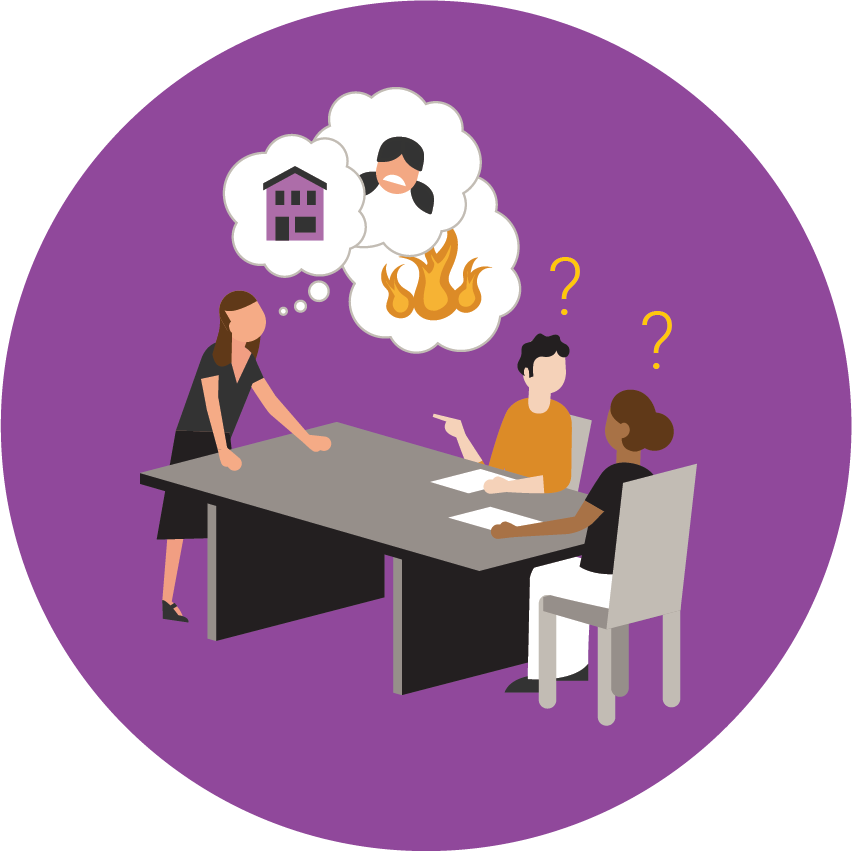While there are far more reasons than remedies for workplace apathy, disengaged employees are not doomed to soul-destroying days in the office. When we build meaning into our work through conversation, connection, and belonging, we can begin to turn workplace apathy into enthusiasm.
In this post, we recap highlights from our second webinar, Overcoming Apathy and Disengagement, in our Organizational Adulting series.
Feeling disengaged at work?
You’re not alone.
A recent survey of XPLANE friends and followers indicated that some 60% of you observed apathetic behaviors at work that prevent your teams and businesses from reaching goals and getting better results. Our findings align with those from Gallup, who in 2017 surveyed workers from more than 140 countries and found that only 15% of those surveyed were “psychologically committed” to their jobs. The majority—85%—were either “disengaged” or “actively disengaged.”
The economic consequences of this global “norm” are approximately $8.8 trillion in lost productivity, according to Gallup’s State of the Global Workplace: 2023 Report.
Factors that Drive Apathy and Disengagement
We’ve identified five key causes of workplace disengagement. Do you recognize any of the following?

1. Personal Factors
When someone who used to be engaged and involved at work suddenly becomes disengaged, it’s possible that something might be amiss in their personal life.
This can be tricky to address. The first step step is being empathetic and supportive.
Showing empathy might not solve the problem, but it can ease stress and make it easier for someone to reengage when their personal challenges have subsided. Some questions you might ask are:
- What’s going on?
- Is there anything you need?
- Do you need some time away?
- Can we flex your schedule to help you through this period?

2. “Crime and Punishment”
When an employee takes action to solve a problem, they commit the “crime”. When they receive negative feedback about their actions from a boss or co-worker, they receive their “punishment”. We hear about it all the time—I went to my boss and pitched my fix, but all I heard was, “I’d like to support this but I have to go through the proper channels.” Or, “This isn’t our responsibility.” Which means it will never get done.
Shutting down pro-active individuals and teams is hugely demotivating, particularly when the “punished” employee believes they are acting on behalf of the organization. Most “punishers” aren’t trying to deflate morale or derail improvement, they are following a protocol, enforcing spoken and unspoken domains of authority.
Rooted in personal or cultural workplace behavior, control via “punishment”, whether intentional or not, is antithetical to progress, cooperation, and innovation. It lowers employee engagement and squashes passion and creativity at work.

3. The Drive for Efficiency
Whether you make widgets or provide services for widget makers, an efficient operation is both competitive and profitable. But a singular focus on efficiency can lead to apathy and disengagement. Why? For starters, the speed of change in business, any business. Purpose and desired outcomes change faster than the “efficient” work processes we cherish and follow.
Let’s say your company has a strong process culture. You’ve fine-tuned processes that were developed five years ago to meet company goals. In the meantime, however, your purposes, competition, and customers have changed. Think about your business. Odds are, in the last five years your technology capabilities have evolved tremendously, and your vision and goals have shifted to keep you competitive and profitable. Have your processes kept pace? Probably not. This disconnect can be acutely frustrating for workers who must struggle against outdated processes that no longer match the purpose of their work. Over time, this frustration can turn to apathy.
Metrics, another player in the push for efficiency, can also give rise to apathy and disengagement.
While metrics are important, we tend to disregard the importance of qualitative human behaviors—the things people do at work that create meaning, connections, and allow them to bring their best selves to work.
If we only measure quantitative factors, we miss the opportunity to set higher expectations for the human side of work. We miss the chance to set the bar on collaboration, creativity, innovation, and empathy for our customers and co-workers. To rely on or impose metrics without factoring in the human element can make people feel like a number or a data point on a spreadsheet—dehumanized and unseen—which can eventually lead to apathy.

4. Work as a Commodity
There’s nothing more dispiriting than feeling like you could be replaced at any time—or that no one appreciates what you do.
In addition, if you’re not allowed to do what you’ve been hired to do or you never have the opportunity to use your skills, you can end up apathetic.
This is “work as a commodity,” and it’s up to the leader, manager, or team to make room for a variety of contributions, to get to know team members’ talents and skill sets at a deeper level, and to find ways to effectively use an employee’s full range of capabilities.

5. Disconnection from Purpose and Impact
When you can’t see how your work supports or contributes to the company’s vision and purpose, it’s easy to feel disconnected and apathetic.
Leaders must provide “sight lines” that enable employees to see how they help others downstream and how others upstream have helped them. When people work together, ripples of shared purpose and connection spread, helping everyone be more effective and engaged.
A Cultural Transformation
Work is changing. All of us in our respective businesses and jobs are experiencing a cultural transformation. For some of us, we are making the next step from an information culture into a purpose culture. Others are making a larger leap from industrial to purpose, as shown in the illustration below. We are moving into a business culture where people don’t stay at jobs. People jump companies and industries multiple times in their careers, staying with an organization or a particular job an average of 4.3 years.

As we move out of the Information Age—the age of engagement, curiosity and creativity—we’re moving into what Klaus Schwab, a German writer and economist, calls the Age of Purpose, where people are valued for creating meaning and fulfillment, making connections and being self-aware. An age where purpose and mutual value are paramount to all else. Today’s employee wants more than a paycheck, they want to be a part of something important, something meaningful.
When this meaning and purpose are denied or squashed by a drive for efficiency or “crime and punishment”, apathy results. The workplace is stripped of the energy and dedication to purpose that today’s workers offer their companies. This leads to attrition and loss of institutional knowledge and capabilities.
Understanding this big picture is a key to changing the game so that the players (employees) stay engaged and effective in their jobs.
How to Reengage and Build Belonging
Helping employees engage is not about providing lunch once in a while, beer on Fridays, or ping pong tables—it goes much deeper.
In her article, “Why Perks No Longer Cut It For Workers,” Sue Shellenbarger columnist for The Wall Street Journal comments, “What will distinguish the most profitable companies from the rest in the coming year won’t be whether they offer foosball or free food. It will be whether leaders foster a workplace culture where employees feel a sense of belonging, like their jobs and trust their managers to help them move on to a better one.”
To truly reengage apathetic employees, you’ll need to inject work with meaning, create authentic connections, and nurture a sense of belonging. First, however, we must have a common purpose.

Build Common Purpose
Our experience shows that bringing people together to come up with a shared purpose—rather than one person or a leadership group determining that purpose or vision—is the first best step. We strongly believe that people support what they help build. The co-creation process creates a sense of ownership and advocacy that cannot be achieved by creating a vision in an executive vacuum and pushing it down to employees.
By building this purpose together—even if you face obstacles such as feeling misaligned with the rest of the organization—you start to create a network driven by a shared purpose. This engages people and connects one team to another, and then another.

Create Connections, Accountability, and Belonging
Including others in decision-making builds accountability and enhances a sense of belonging, qualities that keep apathy at bay.
Envisioning a shared future together is another way to create connection and build belonging. If you’re in a leadership position, ask employees what they want the organization or team to look like in a year, three years, or five years from now.
You can also keep the conversation going with a space, be it a physical space, like a giant whiteboard in a conference room, or a digital space, where people feel empowered and free to speak their minds. This should be a space where people can ask questions—even when they don’t have answers. While solutions are great, really good questions are even better.
“Actions to Create Engagement and Connection” Worksheet
XPLANE has developed a worksheet to help teams and organizations overcome apathy by creating engagement and connection. This worksheet helps you build a sense of community among groups of people.
For more information on using this worksheet or overcoming apathy and disengagement in the workplace, contact XPLANE. We’re here to help.
If you have thoughts to share or questions about this approach, we would love to hear from you.
Finally, if you missed our prior Organizational Adulting posts, be sure to check them out in the links below. And stay tuned for future posts.
- Introduction to Organizational Adulting: Insights That Lead to Better Ways of Working
- Organizational Adulting: Your Barriers + Our Insights = A Live Conversation
- Organizational Adulting: Divisive Workplace Behaviors and How to Overcome Them
- Organizational Adulting: Overcoming Apathy and Disengagement in the Workplace
- Organizational Adulting: You Are What and How You Communicate

Are your employees resistant to change?
Use these resources to start tackling your organization’s culture challenges. We’d love to hear how they’re working for you — or to partner with you in designing a custom approach that will help accelerate change. Get in touch today to talk about how XPLANE could help you enrich your organization’s culture.
